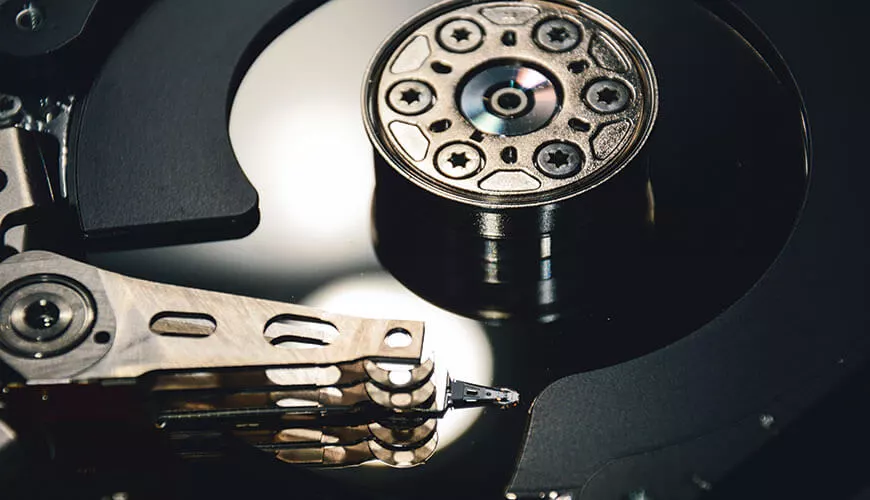To help you understand the different disk and storage types available for server and workstations, I’ve put together a brief overview of the main types for you.
Storage types fall into three main categories....
Direct attached storage – DAS
Storage area network – SAN
Network attached storage – NAS
Direct attached storage has progressed through various technologies; PATA, SATA, SCSI, SAS, all using different cable connectors. However most higher end shared storage is accessed over the network using a NAS, or SAN configurations like Fibre Channel, iSCSI or AoE (ATA over Ethernet).
DAS
These disks are connected directly (locally) and used in both servers and workstations. Directly attached storage connects multiple disks in arrays, or single disks of the following types:
PATA: Parallel ATA, or ATAPI. 150MBps. (Megabytes Per Second)
These disks use IDE connectors to connect one or two drives on a cable, usually DVD drives and hard disk drives. There are still some in use, but PATA is old technology now.
SATA: Serial ATA. 6Gbps currently for SATA III (That's 600MBps)
These disks have their own fast channel on the controller and use much narrower cables than PATA.
When using these drives in a server or SAN make sure they have a high MTBF rating, (mean time between failures) as workstation drives fail more quickly. The SSD (Solid State Disk) variety of SATA can achieve higher read/write results than standard SATA disks; 1,100 MBps reads and close to 700 MBps writes. They have no moving parts as they only contain chips.
Ultra320: SCSI drives. 320MBps
These SCSI (Small Computer System Interface) drives were the standard for servers in the past. The shared bus connectors could hold up to 14 disks but contention would increase the more disks were added. The maximum disk size is 300GB.
SAS: Serial Attached SCSI. 3GBps/8gbps currently.
As IDE was replaced by SATA for workstations, similarly SAS has replaced SCSI for servers. SAS drives are dual-ported and therefore faster than SATA but SAS drives cannot be as large as SATA. Currently a standard 3.5” SAS runs at 15,000 RPM, and a 2.5” runs at 10,000RPM but with smaller storage. However the advantage of smaller disks is that more can be squeezed in giving an over all increase in capacity and access speed. A NLSAS (Near Line SAS) combines a SAS interface with a SATA drive. These can be up to 2TB in size currently. They provide larger volume but with the lower performance of an SATA drive at 7500RPM.
NAS
A NAS has multiple disks usually in a RAID array, and appears on the network as a single node of shared storage. NAS storage does not appear to your server or computer as a disk drive, rather as a network location which can be added as a mapped drive. They are popular because they are much cheaper than SANs and allow the creation of user access permissions, and certain software can be run from them. They are often used to back up servers or to provide access to shared files to many computers.
They use shared file system protocols like SMB/CIFS, NFS, AFS and GFS. These protocols allow multiple users to access the same file at the same time, however this overhead software does make transmission slightly slower than SANs.
SAN
Unlike a NAS, a SAN presents a drive for the server to connect to, which appears in disk management like a normal drive would. SANs incorporate multiple network devices on a separate self-contained network, which appear as one drive, which can be divided up. These drives are then available to multiple servers and computers. They often use higher end switches to create a VLAN, which joins the two networks together and provides security. They use SAS or SATA in multiple RAID arrays connected together. There are two types of SAN; iSCSI and Fibre Channel (FC), both use SCSI commands, except that FC packages SCSI commands into Fibre Channel frames, and iSCSI uses Internet Protocol.
iSCSI SANs. 1Gbps/10Gbps currently
iSCSI is the first protocol that uses native SCSI commands end-to-end over IP, (although fibre Channel can be made to do this.) It's speed it limited by the speed of the LAN as it uses ordinary network cards. iSCSI SANs can be bought ready-made but can also be put together with standard hardware.
The iSCSI device is referred to as the 'target' and any computer or server can be used as an 'initiator' as long as it has initiator software installed. (This includes Apple Mac). The initiator scans the target looking for a LUN (Logical Unit Number) Each Logical Unit can be made up of many configurations, for example a whole RAID set, or a group of partitions or disks, but is seen by the LUN as one drive. There are two versions of Microsoft iSCSI Initiator installed on a Microsoft server; one version is to allow booting from the SAN when the OS is installed on it, the other is for use as normal storage.
Fibre Channel SANs. 2Gbps/20Gbps currently
Fibre channel is actually older than iSCSI and uses dedicated hardware instead of just NICs and switches; it uses special controllers called HBAs (Host Bus Adaptor) on the client computers, and special fibre channel cables and switches to interconnect the components. Traditionally the cables were fibre optic, but twisted pair and coaxial copper cables also exist. FC is more expensive but it is reliable and secure, which is why it is widely used. An HBA card is needed for each server, which connects to a port on the Fibre Channel switch. The switch usually has four ports for redundancy and speed, in case one pathway fails, another takes over. Once LUNs are created on the Target, they can be zoned and masked to ensure that they are only accessible to the proper servers or applications. The maximum length of Fibre Optic cable depends on the quality of the cable, for example 50/125 multimode fiber can reach up to 500 meters.



